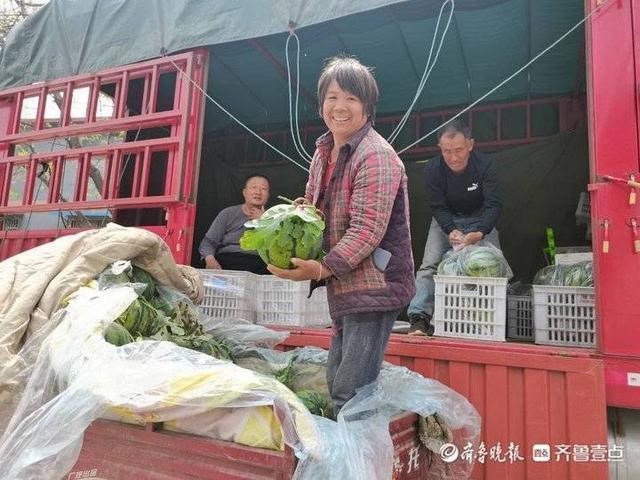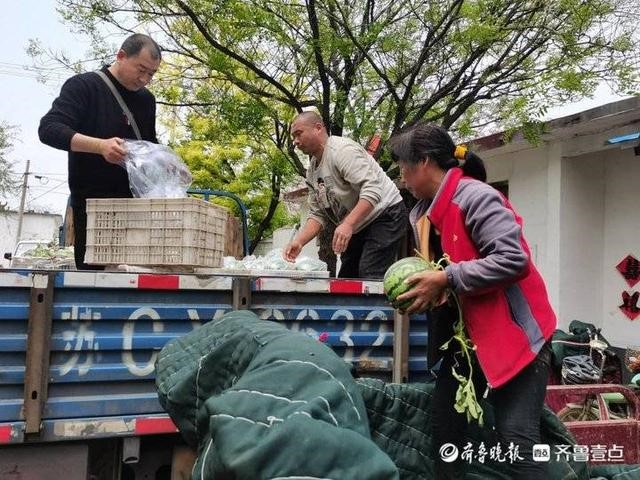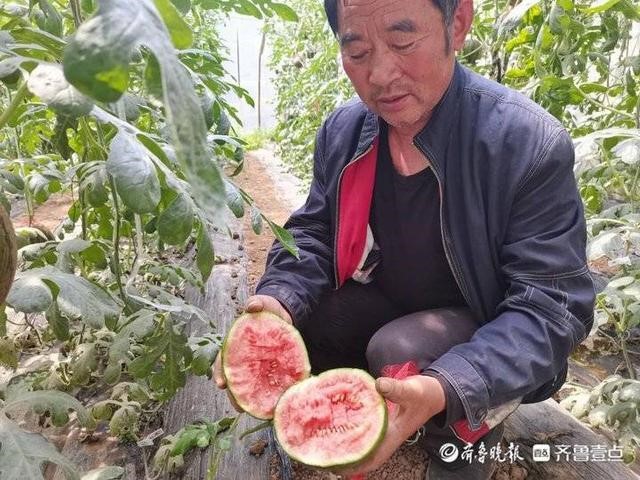Greenhouse farming boosts poverty reduction, rural revitalization
p.china.org.cn by Liu Yizhou, June 08, 2021 Adjust font size:

Vehicles loading withfresh watermelons Dalyuxiang village, Xuecheng district, Zaozhuang city, Shandong province [Photo courtesy of Qilu Evening News]
Vehicles frequently stream intoDalyuxiang village, Xuecheng district, Zaozhuang city, Shandong province, and leave full of fresh watermelons picked from the dense vines that grow in the hamlet’s poverty reduction-oriented greenhouses in the second half of April and May every year. Dalyuxiang resident Xu Hualiang recently mentioned that a type of pepper that is regarded as the soul of Zaozhuang spicy chicken – a well-known regional dish – and tomatoes that conjure up memories of the old days when the city’s senior citizens eat them are also grown at the facilities in addition to the sweet, thirst-quenching melons and that the produce sells well and helps the village’s inhabitants increase their incomes.
Developing a well-known, profitable watermelon brand

Sun (left), who has been purchasing watermelons in the hamlet for a decade, loads watermelons that villager Gao Hengtao and his wife picked that morning onto a truck with the grower. [Photo courtesy of Qilu Evening News]
Dalyuxiang bustled on April 23 after the rain that had been falling for several days dissipated and harvest activities resumed. Sun, who has been purchasing watermelons in the hamlet for a decade, loaded watermelons that villager Gao Hengtao and his wife picked that morning onto a truck with the grower.
“I have been purchasing the watermelons that are grown here for more than 10 years,” Gao noted. “They taste better than most, and everyone is honest.”
The buyer currently purchases an average of approximately 1,500 to 2,000 kg’s worth of Dalyuxiang watermelons at a time from mid-April to late May and up to 3,500 to 4,000 kg’s worth during the village’s peak harvest season in mid-May. Far less were available before the hamlet overhauled its agriculture industry several years ago, however.
“The soil in our village is sandy, which makes it good for growing watermelons,” Xu remarked. “Our production scale was much smaller in the past, and we used outdated equipment and techniques. Many people who were born here worked in other areas before our produce cooperative was established in 2013. The organization constructed new facilities and provided technical guidance, which made it possible for us to use our land more efficiently and increase our incomes.”
The farmer also explained that some of the village’s greenhouses are specifically poverty alleviation-oriented and that they promote the influence of the Dalyuxiang watermelon brand.
Characteristic farming sweetens the heart and adds spicy zest

Li Chunkai, head of poverty reduction greenhouse management and maintenance in Dalyuxiang, holds a watermelon. [Photo courtesy of Qilu Evening News]
Head of poverty reduction greenhouse management and maintenance in Dalyuxiang, Li Chunkai is very familiar with various cultivation techniques and inspects the growth of the produce in more than 20 different greenhouses every day during harvest season. He explained that some of the watermelons that are grown are suspended in nets and that they are smaller and more valuable than the ones that remain on the ground.
“There is a lot of demand for those watermelons,” Li stated. “They are sweeter as a result of the increased sunlight that they receive, and they always sell out in advance via phone order before harvest season arrives.”
Li also mentioned that many of Dalyuxiang’s formerly impoverished residents have been harvesting watermelons and tomatoes from morning to night recently. He noted that the village leases land from its inhabitants and that eight or nine people who have escaped from poverty each earn an additional 20,000 yuan (US$3,084) of annual income.
Some of the buyers that travel to Dalyuxiang in the spring come for the thin-skinned Zaozhuang peppers that are also currently being harvested in its greenhouses.
Current policies ensure that only lack of effort will cause people to remain in poverty
Located in eastern Zaozhuang, Dalyuxiang possesses 203 ha of arable land, 129 ha of which is devoted to grain and 67 ha of which is used for produce cultivation.
The people who participate in Dalyuxiang’s poverty alleviation projects are eligible to receive monthly bonuses if they meet certain criteria even after they have escaped from poverty. The village’s seniors have remarked that the policies that are currently in place make it possible for able-bodied people to earn good incomes and that they will only continue to be impoverished if they do not put forth sufficient effort.
“Nobody wants to live in poverty,” the person in charge of poverty alleviation efforts in Dalyuxiang stated. “Now there are many ways that people can get out of it as long as they work hard.”
The village is focused on synchronizing its poverty alleviation-oriented industries with rural revitalization efforts at present in order to help them develop in an effective, long-term manner and so that its poverty reduction achievements can be taken to a higher level.